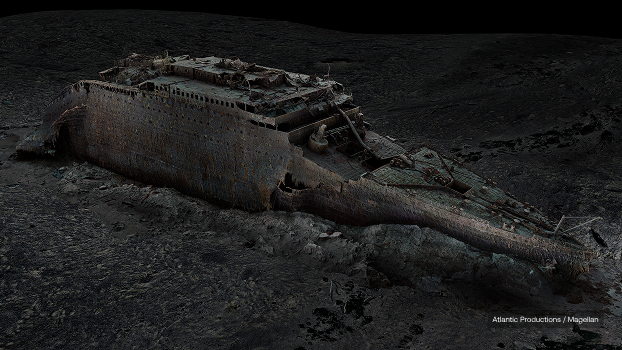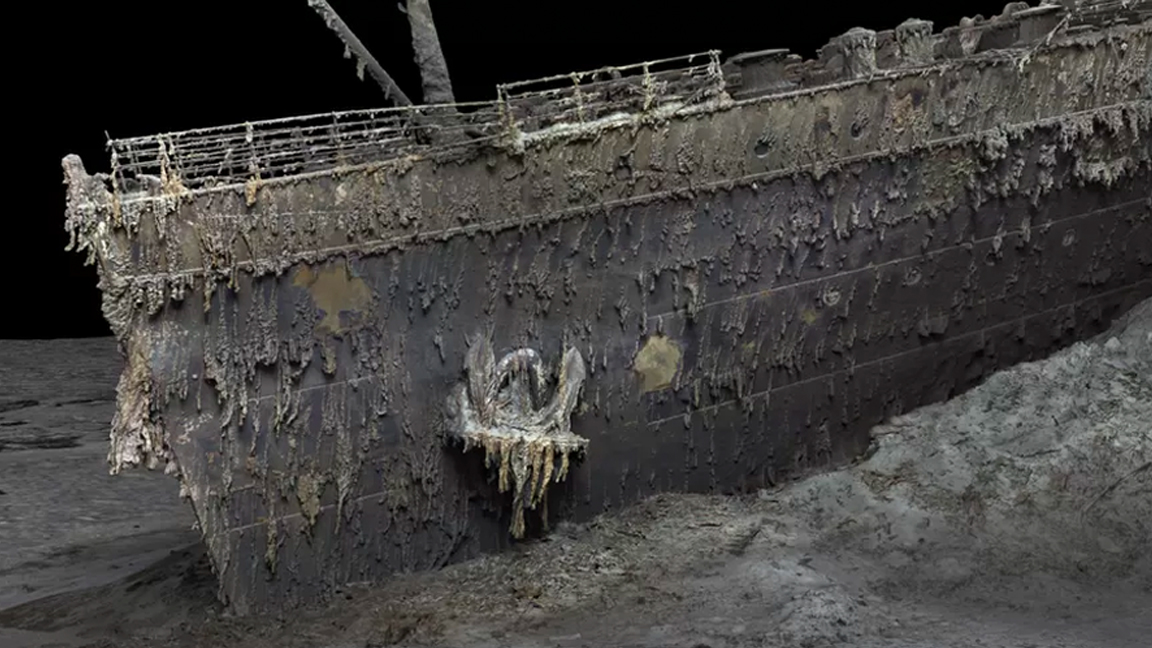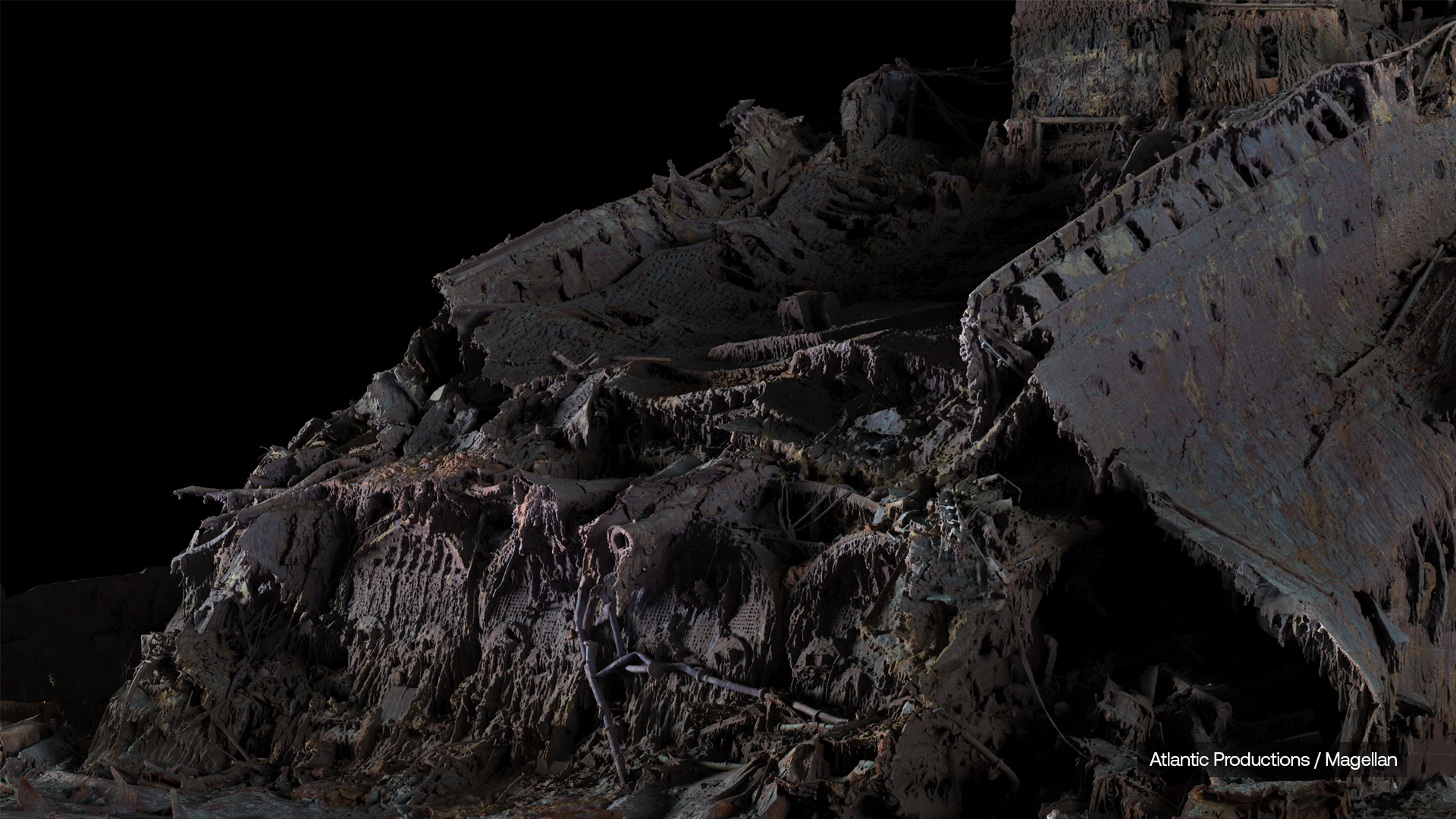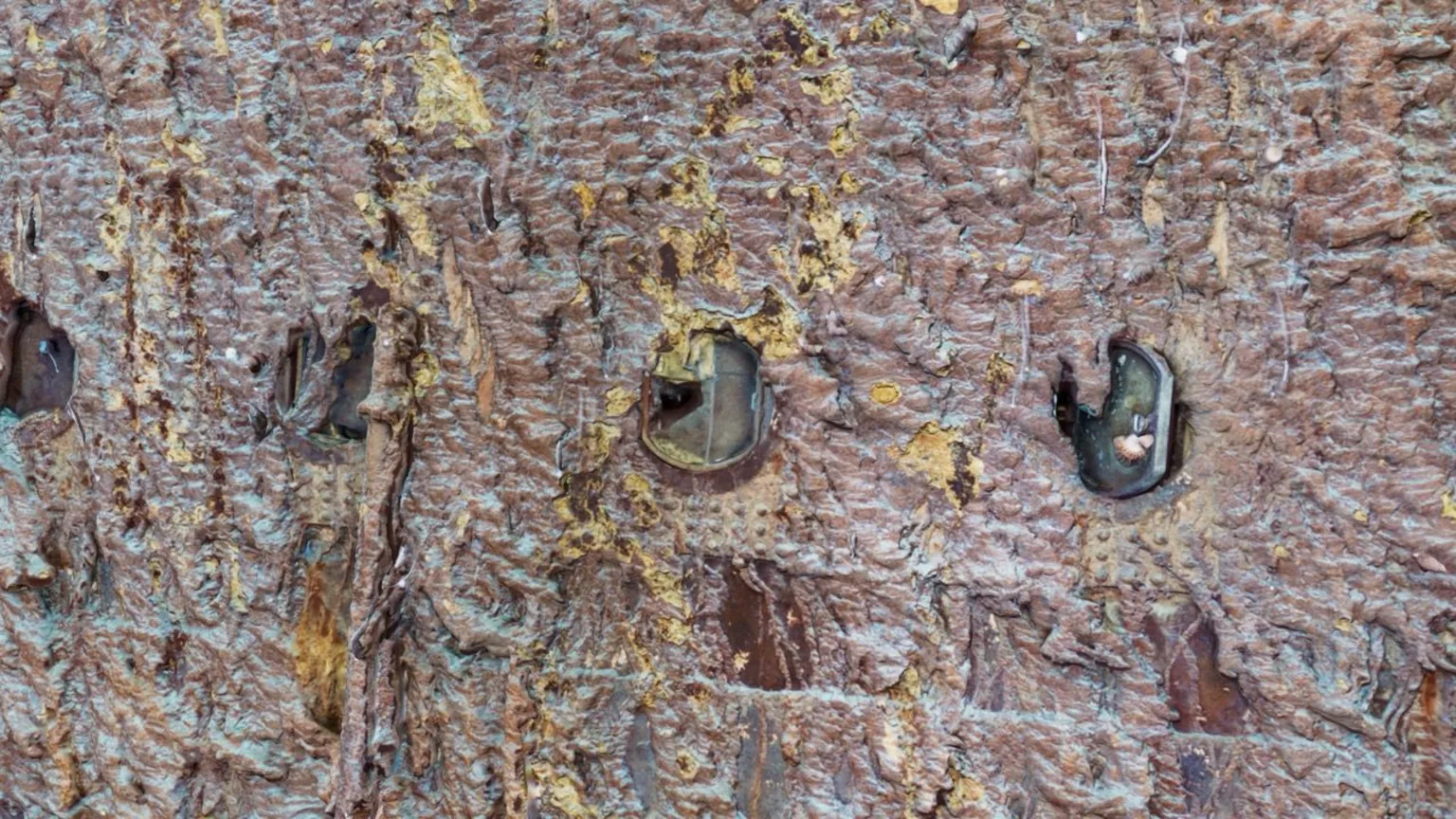
The fate of the Titantic has been a source of fascination for over a century. There have been expeditions to the wreckage in the Atlantic, but it's so dark 4,000 meters (over 13,000 feet) under the sea that individual fotos and video provide a limited view.
Now our understanding of how the Titanic sank could be transformed thanks to the creation of a digital twin of the wreckage based on 3D scans (see our pick of the best 3D scanners if you want to scan somewhat smaller objects).
The full-scale replica features in a new National Geographic documentary: Titanic: The Digital Resurrection.
We first wrote about Magellan and Atlantic Productions' work to create Titanic 3D scans almost two years ago. Now those scans have been used to create a digital twin: a full-scale 3D replica of the wreck created from 700,000 images taken from every angle.
The model captures the wreck in incredible detail, from the fractured hull plates to debris on the seabed, and it allows scientists to explore the shop at its real size to learn more about how it sank after hitting an iceberg in 1912.

The replica reveals a series of small, A4 paper-sized punctures along the hull, which challenges the prevailing idea that the iceberg tore one large gash. The discovery suggests that water slowly overwhelmed the ship’s design limits.
The Titanic was described as unsinkable because it was designed to stay afloat even if four of its watertight compartments flooded. But a new simulation suggests that punctures were inflicted across six compartments. Water coming slowly into all of those holes would have eventually flooded the compartments.
Get the Creative Bloq Newsletter
Daily design news, reviews, how-tos and more, as picked by the editors.

The wreck was mapped using underwater robots called virtual remotely operated vehicles, or vROVs. Information can now be combined with a structural model created from blueprints along with measurements and information on speed, direction and position using numerical algorithms to explore how the Titantic may have sunk.
More new details have already been identified, including a porthole that may have been smashed by the iceberg. The scan also provides a view of a boiler room showing some of the boilers are concave, potentially confirming eye-witness testimony from the time that suggested that engineers continued to work to keep the lights on as the ship sank.
On the deck of the stern, a valve has been found in an open position, indicating that steam was still flowing.

Experts estimate that it will take years to fully analyse the 3D replica to uncover all of its clues. In the meantime, the human tragedy of the Titanic is very visible in the personal possessions shown scattered across the sea floor.
Titanic: The Digital Resurrection will be shown on National Geographic US on 13 April and National Geographic UK on 15 April. Magellan is also developing a vROV Pilot Titanic game available on Steam.
For more on what to watch this month, see our piece on What is The Eternaut?

Thank you for reading 5 articles this month* Join now for unlimited access
Enjoy your first month for just £1 / $1 / €1
*Read 5 free articles per month without a subscription

Join now for unlimited access
Try first month for just £1 / $1 / €1

Joe is a regular freelance journalist and editor at Creative Bloq. He writes news, features and buying guides and keeps track of the best equipment and software for creatives, from video editing programs to monitors and accessories. A veteran news writer and photographer, he now works as a project manager at the London and Buenos Aires-based design, production and branding agency Hermana Creatives. There he manages a team of designers, photographers and video editors who specialise in producing visual content and design assets for the hospitality sector. He also dances Argentine tango.
You must confirm your public display name before commenting
Please logout and then login again, you will then be prompted to enter your display name.

